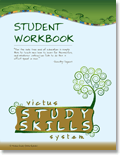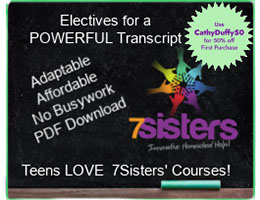Effective study skills are essential for academic excellence, but few students are taught an explicit system for developing study skills. Most flounder around, gradually developing their own methods that might be more or less effective. The Victus Study Skills System is about developing effective study skills and achieving academic goals, but it also helps students apply the same process to other areas of their life such as faith and finances. "Victus" is the Latin word for "way of life," and students are taught that planning in all areas of life is important.
While the Victus Study Skills System was originally designed for middle school through high school students, new levels make it available from the primary grades through college. There are four student workbooks subtitled for each different level: Primary Grades, Elementary, Student Workbook (the original book for middle school through high school), and College. There is also a separate DIY version of the original Student Workbook for independent study situations.
A single Teacher Edition is used for all except the DIY workbook. However, it matches up exactly only with the original Student Workbook and shows reduced images of those workbook pages. Because of this, in addition to the Teacher Edition, the Teacher Supplement Primary and Teacher Supplement Elementary are required for those teaching the two younger levels. These two supplements explain how to use the Primary and Elementary workbooks and have images of the student pages from the corresponding workbooks.
Their optional Training Video (DVD) is available for reinforcement or in cases where students need to study independently. There are also two optional PowerPoint presentations for those teaching students at the elementary level or above.
I’ll describe the original Student Workbook first since the Teacher Edition was designed for this level, and other levels were adapted from it. This level is recommended for as young as fifth grade and up through eleventh grade, but I think it is probably ideal for grades six through ten.
The key idea is that students learn to operate by setting goals and making plans to achieve them. Using various questionnaires and charts, students begin by reflecting upon where they are in terms of their study skills. They consider their learning styles. They set goals (and prioritize them) with measurable objectives and action plans. This includes both long-term and immediate goals. As part of the process, students work on skills such as organization and time management, motivation, effective study habits, taking notes, and testing strategies.
The Teacher Edition is designed for a teacher or parent to lead students through the course. While the course will probably be more interesting with multiple students, it can be used with only one. Since lessons are designed for class interaction, you will need to adapt some lesson presentations for a single student. The Student Workbook course should take about five hours of instruction and can be taught in five one-hour sessions or broken down into shorter, more numerous segments.
The independent study version of this is contained in a single worktext titled Victus Study Skills System: Student DIY Workbook. This book adapts the lesson presentation material that would have been taught by the teacher in the teacher-led version so that students get the complete course through independent study. You still might also want to use the Training Video as a virtual teacher. I would probably use the video with middle school students working independently, but I don’t think it’s essential for high schoolers.
In both versions, students immediately apply what they have learned from each lesson in some sort of activity in the student book. Sometimes they will complete charts or activities in preparation for learning about a topic. For example, before setting goals, students write a personal mission statement, complete a chart that has them identify what they think are their priorities, estimate how much time is spent on each priority, and maintain a log for three days to see how accurate they are.
By the end of either version of this course, students should understand that they have the ability to greatly influence the direction of their own lives by setting and achieving meaningful goals, and they also should have developed some practical study skills for academic success.
The student workbooks for primary and elementary students present some of the same concepts taught in the Student Workbook, such as goal setting and study habits, but at simpler levels. One example from the Student Workbook: Elementary has students complete a Study Habits Checklist as do older students. However, the elementary checklist has fewer questions, and they are stated more simply. Like older students, elementary students will learn about time management, scheduling, using a planner, organization, the PQRST (preview, question, read, state, and test) approach for reading study material, notetaking, listening skills, and test-taking skills. Student Workbook: Primary is even more basic and much shorter than the other workbooks. It covers study habits, goals, time management, a PQRS approach to reading, and listening skills.
I have a few concerns about some activities for younger students. For example, elementary students are expected to create a mission statement and set their own goals. On page 13 it asks them to “Write two or three sentences about what you want to be doing when you are 30 years old” as well as their own mission statement. I doubt that many students in the elementary grades have enough life experience to envision life at age 30 or to write a mission statement. You can always skip sections like this if you wish. Also, you might use sections of a course over a few years, selecting the most appropriate time to introduce each topic.
The Victus Study Skills System: College is intended for students in the last two years of high school. It helps them prepare for the transition to college and the increased responsibility they will have for their own learning. It can either be taught by a teacher or used for independent study. If students have not mastered skills taught through the Victus Study Skills System before the end of high school, and they plan to attend college, they definitely should use this workbook.
Concepts are repeated through each level of the workbooks although, generally, at higher levels. Parents or teachers might repeat or review sections of the course with students throughout the year as needs arise.
A new Student Planner is intended for students to use themselves. It is a basic lesson planner with a two-page spread for each week. It also has some additional helps at the front of the book that tie in with skills taught within the Victus Study Skills System plus pages at the back for keeping grade logs and writing a brief life plan. This should be most helpful for students in junior high and above.









